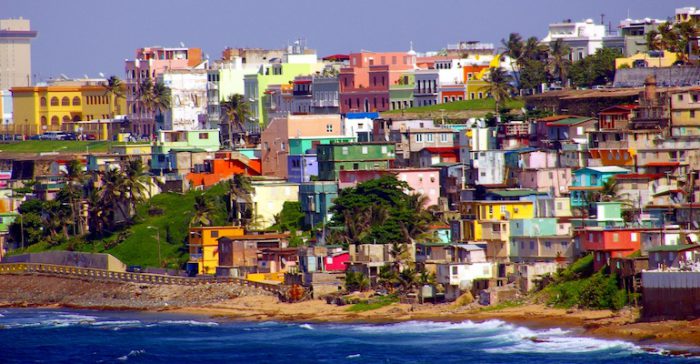Written by Shannon Dracup, ERS, for Zondits
More than a year and a half has passed since Hurricane Maria struck the island of Puerto Rico, a US territory that’s home to just over three million citizens. The strongest storm to hit Puerto Rico in 89 years, Hurricane Maria devastated the island’s infrastructure and the population’s livelihoods, resulting in an estimated 3,000 deaths. The storm also led to the longest major power outage in US history, tearing down 80% of the utility poles and damaging critical power generators. Some communities, particularly in more rural areas, were left without electricity for nearly a year and without access to clean water, food, and necessary streams of communication to and from the island for months. The weak utility grid only exacerbated the damages that the island continues to endure.
Looking to the Future
Puerto Rico is now forming a clear vision for their energy future. With power finally restored across the island, various stakeholders are coming to the table including residents, policymakers, environmental advocacy groups, and the island’s government-owned utility, Puerto Rico Electric Power Authority (PREPA) – and the conversation is contentious. Now that the island has an opportunity to rebuild, there is an urgency to strengthen the grid, not just restore it to its previous state. The grid is still vulnerable to outages resulting from future natural disasters, likely more frequent and severe. In the short-term, residents need reliable and resilient power; in the long-term, they also need power that is cleaner and lower cost.
Hurricane Maria’s destruction presents an opportunity for the island to modernize their energy system and rebuild their utility grid through distributed generation. Distributed generation, more specifically low-carbon microgrids, improves grid resiliency and is key to modernizing and securing the remote parts of Puerto Rico. These microgrid systems operate independently of the main grid and, in the event of a power failure, can continue running to deliver clean, reliable power to customers and reduce electricity losses along transmission and distribution lines. Shifting away from a centralized grid requires new thinking about how the system is designed, financed, and managed – and it requires policy that supports this modernization.
The Role of Policy and Utility
As of April, policy is shifting in the right direction. Puerto Rico Governor Ricardo Rosselló signed the Public Energy Policy Law of Puerto Rico, mandating 100% renewable energy for the island by 2050. Along the way, they must draw 40% of their electricity from renewables by 2025 and do away with coal by 2028. This mandate will serve to shift long-term resource planning for the island, accelerating the deployment of renewables, increasing resiliency, and shifting away from centralized generation. Despite this promising plan, however, officials are struggling with how to visualize a roadmap to transform the island from its present reality to its renewable energy future, how to finance this transformation, and how to establish the role of PREPA as the sole utility in this transition.
PREPA was financially unstable long before Maria struck the island, contributing to the largest portion of the island’s debt; the utility is set to be privatized to address this debt issue. PREPA has put forward a plan to reconfigure electricity access on the island. In February, a draft version of PREPA’s 2019 Integrated Resource Plan (IRP) called for a “reliable and resilient” grid. The IRP is meant to help PREPA find the most cost-effective way to utilize current resources while also planning for the long-term. While the PREPA IRP includes record amounts of solar and battery storage and phasing out coal and bunker oil, the plan still involves fossil-fuel-burning plants and infrastructure, including three liquefied natural gas (LNG) import terminals. The planned LNG terminals are being met with resistance by residents and climate advocates, who are also fearful that the privatization of PREPA will lead to consumers having far less say in PREPA’s regulation. This has led to a complicated and unclear – but still feasible – energy roadmap for Puerto Rico.
Empowering the Consumer
On the ground, some communities have disconnected from the grid and are taking charge of this shift to renewables, ensuring that when the grid fails, their stored energy can kick in. Customer-owned generation has proven to be cheaper than PREPA’s rates and has remained successful due to the low energy needs of the community. After Hurricane Maria, the last households to have their electricity restored were in the remote towns located in mountainous regions and along the southern coast; these communities are home to the lowest-income residents with the highest vulnerabilities to natural disaster impacts. From a social justice standpoint, these families need immediate access to independent microgrid systems.
Some groups are working to make more community microgrids in Puerto Rico a reality. The Environmental Defense Fund (EDF) released a plan to deploy sustainable and scalable low-carbon microgrids in these vulnerable, rural areas. By utilizing battery storage, solar energy can be supplied when it’s most needed. EDF, in partnership with local communities and academic institutions, is working to implement microgrid systems across the island and support long-term energy solutions.
As Puerto Rico reimagines their utility grid, lives are on the line in the face of worsening hurricane seasons and high levels of poverty, which has led to a contentious debate between those supporting renewables and those more invested in fossil fuels. Environmentalists and energy advocates say the shift to renewables and a decentralized grid is critical, while power company executives argue that a shift to relying entirely on renewables is risky and that natural gas is the superior power source for the island. Nevertheless, policymakers and energy consumers recognize the urgency in the proactive, bottom-up rebuilding of their energy system to deliver energy independence and resiliency to all residents. Microgrids continue to pop up around the island, and, while there’s much to be done, this development represents the start of an exciting and necessary shift to resiliency for Puerto Rico.
